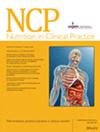Efficacy of enteral feeding by gastrostomy tube placement in patients with Lennox‐Gastaut syndrome on body weight and days of hospitalization: A retrospective case series
IF 2.2
4区 医学
Q3 NUTRITION & DIETETICS
引用次数: 0
Abstract
BackgroundLennox‐Gastaut syndrome (LGS) is a severe form of drug‐resistant epilepsy that begins during childhood and frequently leads to significant neurological impairments. Patients with LGS are likely to receive improper oral nutrition because of issues such as dysphagia and aspiration risk, potentially resulting in long‐term tube feeding and eventual gastrostomy tube placement. Therefore, we investigated the effects of gastrostomy tube placement on nutrition outcomes and frequency of hospitalization in LGS.MethodsWe retrospectively examined 67 patients diagnosed with LGS who had undergone gastrostomy tube placement between January 2005 and August 2022. Comprehensive clinical data and complications arising from the procedure were collected. Patients’ nutrition condition and frequency of hospitalizations were analyzed before and after gastrostomy tube placement.ResultsGastrostomy tube placement was performed for the following reasons: high risk of aspiration (50 out of 67, 74.6%), dysphagia (13 out of 67, 25.4%), persistent nasogastric tube feeding (2 out of 67, 3.0%), and severe malnutrition (2 out of 67, 3.0%). After the procedure,通过胃造瘘管对伦诺-加斯豪特综合征患者进行肠内喂养对体重和住院天数的影响:回顾性病例系列
背景伦诺克斯-加斯托特综合征(LGS)是一种严重的耐药性癫痫,起病于儿童时期,经常导致严重的神经功能损伤。由于吞咽困难和吸入风险等问题,LGS 患者很可能接受不当的口腔营养,从而可能导致长期管饲和最终胃造瘘管置入。因此,我们研究了胃造瘘管置入对 LGS 患者营养结果和住院频率的影响。方法我们回顾性研究了 2005 年 1 月至 2022 年 8 月间确诊为 LGS 并接受胃造瘘管置入的 67 例患者。我们收集了全面的临床数据和手术并发症。结果 胃造瘘管置入术的原因如下:吸入风险高(67 例中有 50 例,占 74.6%)、吞咽困难(67 例中有 13 例,占 25.4%)、持续鼻胃管喂养(67 例中有 2 例,占 3.0%)和严重营养不良(67 例中有 2 例,占 3.0%)。手术后,年龄体重的 Z 值有了显著改善,在两年时间里从 -3.35 ± 3.57 降至 -2.54 ± 2.70(P <0.001)。此外,住院总天数和因呼吸道症状住院的天数分别从 41.94 ± 51.76 天和 23.75 ± 36.92 天大幅减少到 15.27 ± 26.68 天(P = 0.001)和 10.52 ± 22.98 天(P = 0.009)。结论 胃造瘘管置入术是一种相对安全的手术,对 LGS 患者的营养状况和住院率有良好的影响。
本文章由计算机程序翻译,如有差异,请以英文原文为准。
求助全文
约1分钟内获得全文
求助全文
来源期刊
CiteScore
6.00
自引率
9.70%
发文量
128
审稿时长
3 months
期刊介绍:
NCP is a peer-reviewed, interdisciplinary publication that publishes articles about the scientific basis and clinical application of nutrition and nutrition support. NCP contains comprehensive reviews, clinical research, case observations, and other types of papers written by experts in the field of nutrition and health care practitioners involved in the delivery of specialized nutrition support. This journal is a member of the Committee on Publication Ethics (COPE).

 求助内容:
求助内容: 应助结果提醒方式:
应助结果提醒方式:


